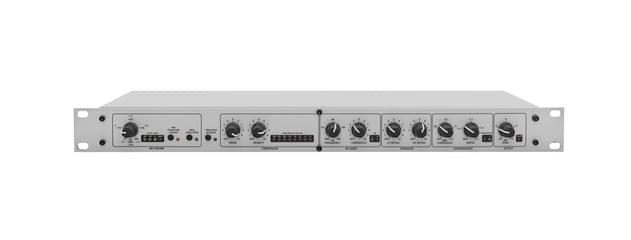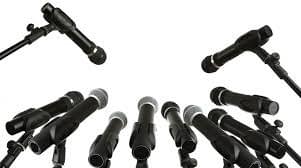4 Ways To Test The Quality Of Your Microphones
Have you always listened to your podcast? Heard your voice crackling on stream? Did you record a song, but the highs look to be too high? If you already confronted these scenarios and other similar circumstances, you should already know the importance of testing your microphone’s state before using the device. Some sites are providing free services for online mic testing. We are sharing one of those sites with you.
Here are four techniques to test your mic’s quality to assure you’re going to record audio with the desired sound qualities
1. Use An Online Mic Test Tool

One of the simple ways to test your mics audio quality is by using microphone testing website like MicTests.net . But, keep in mind that many online mic testing devices don’t allow real-time fine-tuning. So, these tools tend to only let you see the data to help you check which area in your whole system to calibrate.
Therefore, ensure that you know the different parts of microphone sound information before continuing to use these online tools. Although, using these online tools present a comparatively quick and easy way to see which areas in your mics audio performance need development.
After testing, you should see data, such as echo cancellation, sample size, sample rate, volume, and overall quality rating. Calibrate your microphone’s sound play using the data shown and test again until you achieve the aspired audio output.Add paragraph text here.
2. Use A Reference Microphone

As its name suggests, you can use a reference microphone as a point of evidence to help you calibrate your main mic’s audio performance.
You can go about using this device in different ways, depending on your current setup. First, connect your main mics to your computer. Test the sound from that device using your favored audio-recording software. Then, save the data from your main mics and remove the device from your computer.
Connect the reference mics to your computer after. Now, record sounds using the recommendation mic and save that data. Open the two audio files to help you check or fine-tune the audio feature from your main microphone.
As for the second method, connect both the main and reference mics to your computer. Note that you may require extra peripherals to achieve this connection.
Again, use your favored audio-recording software for the quality check. But, this time, you can record audio from both microphones at the same time, saving you precious time.
Both methods are achievable using a relating microphone. However, you need to assess your studio setup to check which option is currently accessible.
Recording Studio Making. Man working on trained digital video channel mixer in a studio. Audio music concept. The interface of equipment for sound processing
3. Use An Audio Interface

Unusual instances may not require you to use high-quality audio when talking to your microphone. For example, online conversations and talks with mom and dad beyond the state might not need high-quality vocals.
But, you strength be recording sounds from several musical instruments. Consequently, you have a podcast with several listeners per episode. If so, you need to ensure you’re generating high-quality audio from your microphone. One way to accomplish such objectives is by using an audio interface.
This piece of hardware connects to your computer or upgrades its sonic capacities.
In other words, using an audio interface allows you to check for other parts than volume alone. It has knobs, dials, and switches to help you check and fine-tune various areas of the equalizer, which may include lows, highs, and mids.
An extra advantage of using an audio interface is you can change the sound settings in real-time. Hence, you can continue doing mic tests with the interface without turning off both of the devices until you reach the desired output.
4. Use A Recording Software
Can you believe singers Todd and Eagan Tilghman sing a duet without testing their microphones first? If these show artists didn’t check the quality of their microphones before their performance, they might wince at the poor audio quality upon listening to the output.
Musicians, Singers, perhaps, and radio DJs, even online teachers require to use high-quality audio from their microphones. But, you might not need modern hardware to test your microphone’s quality. Preferably, you can use reliable audio-recording software.
Some sound-recording software, like is easy to use. Use these applications to check for regards like bass performance, reverbs, and gains while recording from your microphone without spending a fortune.
Moreover, use the record function in these programs to produce real-time sound data. This feature ensures that you can fine-tune your microphone's performance on-the-fly, saving you precious time in return.
How To Make Your Computer Microphone Voice Quality Better?

The usual common problem when recording in your browser is the odious ‘allow' popup. This is so easily missed, and when you do, your mic won't record, no matter what.
Note the popup, right below the website location. It's attached to the security lock icon. This is what happens when a website asks for authorization to record from your mic. If you click ‘Allow' then all should be well. You can then choose which mic to use.
But, what if you click Block Microphone by occasion, or you want to check you've given approval?
Succeeding the camera icon brings up the following popup. Here, select ‘Always pass' and that will give the current website permission to record. Recognize, this is just your setting for the current website, so you're still secure on other sites. And, if you want to give other sites permission to record, you but have to allow it, either with the first ‘Allow' popup or by matching the settings icon above.
So, make assured this setting is correct, and then try another microphones test to check your microphones are working.
What Are Some Easy Tips you can follow for Professional Microphone Audio Quality?

Investment in the right microphone
Microphones are the most essential element of quality audio, but podcasters don’t necessitate fancy, expensive ones.
If you record a speech or interview-style podcast in an office or room in a home, a dynamic microphone is what you require. Other microphones work, but they can require more sources to influence out good sound.
The microphones noted above will create quality sound, but remember that selecting a microphone is mostly about taste and personality. You need to ask a question yourself if the microphone is best for you, your voice, and your brand.
One way to elucidate the “which is best for me” question is to book a session at an acknowledged recording studio and try out a kind of microphones. Take the recordings and get some feedback.
Between the engineer at the studio and your family and friends, you should be able to find a sharp winner. Also, keep your target audience in mind. Does the microphone help express who you are? Does it match the tone your public needs to hear?
- The headset mic's that came with your smartphone. While those are great for arriving live on Facebook, they’re not perfect for podcasting.
- A condenser microphone. They’re made for the acoustics in recording studios, big, fancy. Unless you’re preparing to build a recording compartment in your garage, leave these microphones in the shop.
Find a Prominent Place to Record
This item alone is a quick win for excellent sound.
Before you record, repeatedly check that your room doesn’t follow your voice back into the microphone. Wall decorations, Carpet, Furniture, and non-parallel walls all help calm the observations.
Trying a smaller room, and even a closet, is often more comfortable than acoustically treating your current recording space.
- You should also keep outside noises to a minimum. Common of
- Cars
- Phones and other electronics
- Open windows
- Fans
- Furnaces
- Refrigerators
Speak Near The Microphone
Almost everyone shies away from the microphone. Don’t.
Even a sparse distance from a microphone makes you sound like you’re in a hollow
You’ll want to almost kiss it. Make it your mate, and it will make your friends as you grow your audience.
Set up a pop filter
The downside of talking near the microphone is that it causes “plosives.”
“Plosives” are simply the air from consonant sounds disturbing the sensitive elements of the microphone.
The pop filter, a screen that goes around or in front of a mic, is a tried-and-true resolution. Cheap or Expensive, they’re all about the same.
You can use an audio interface, a recommendation microphone, or a digital tool to help you test your mic's sound performance. Keep in mind that this guide isn’t the ‘end-all’ essential to test mics. Possibly, you have other audio testing techniques in mind. But, consider using those procedures with the orders mentioned in this post to ensure your microphone is forever producing high-quality audio.